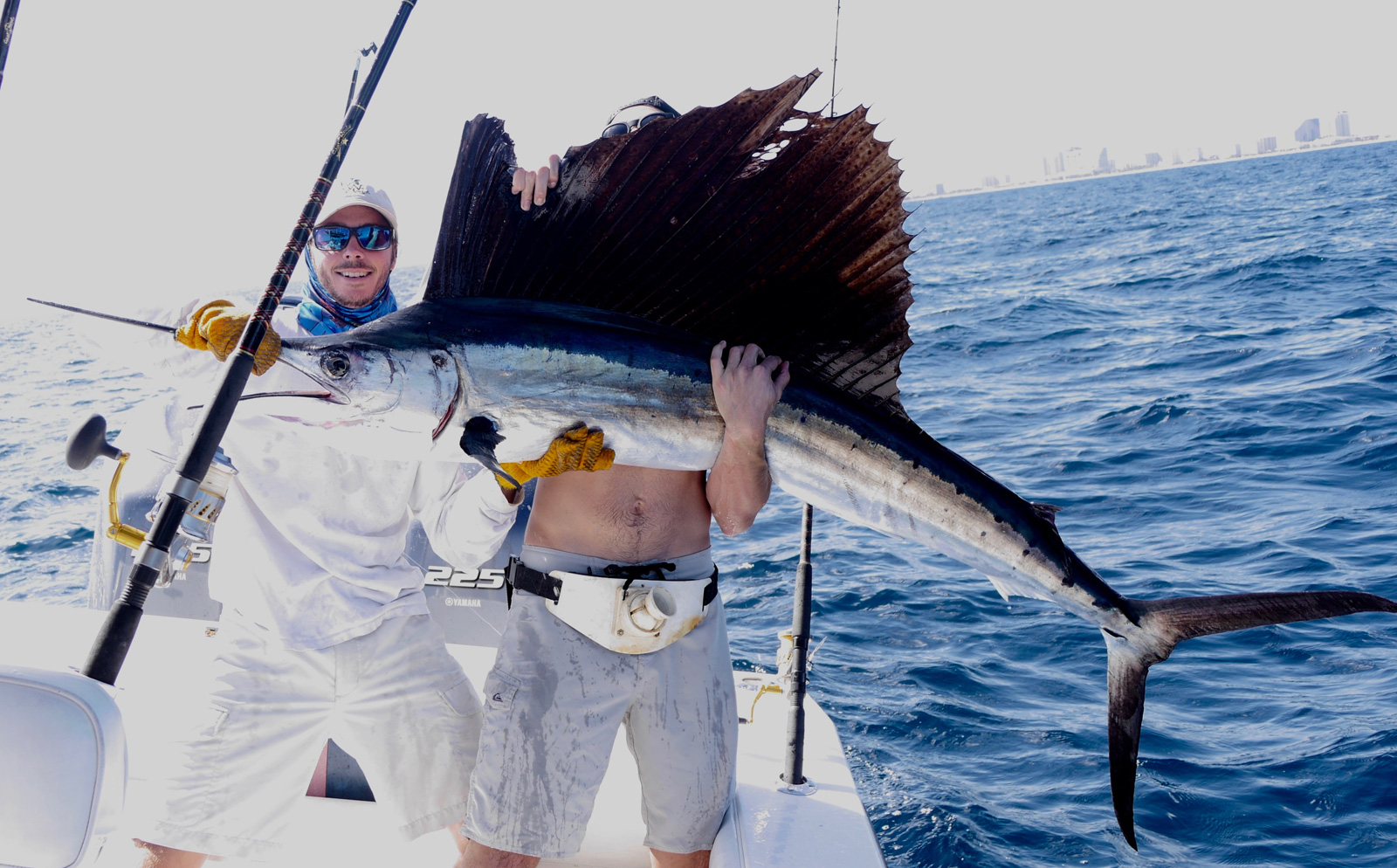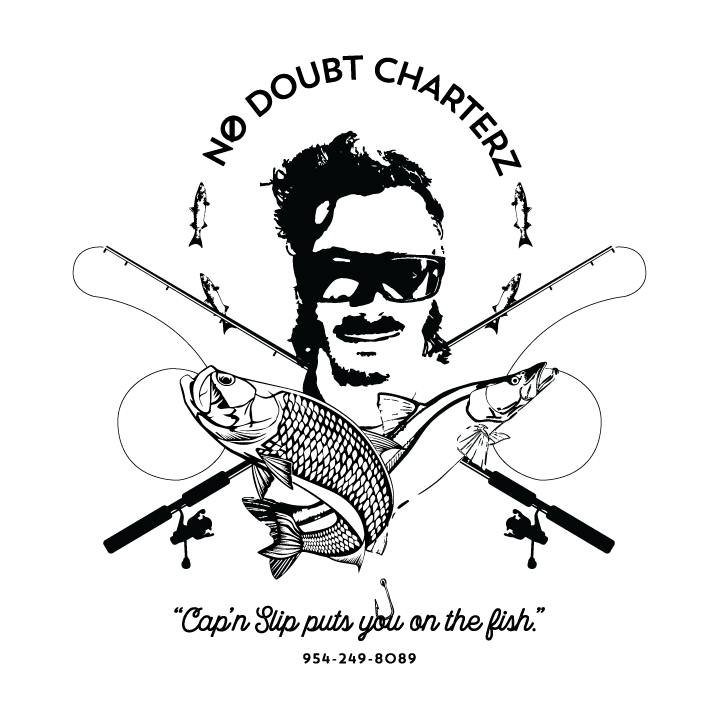
One of the benefits to living and fishing in South Florida is the proximity to the gulf stream and continental shelf. This makes it readily accessible to fish pelagics out of a boat in any size. Kayak offshore fishing has even grown in popularity in recent years. From the palm beaches all the way down to Miami the ocean floor drops off within a couple miles from shore.
The most important thing to consider when venturing offshore in a small boat is the weather. Always keep an eye on the weather reports up to the day you head out and check the forecast before leaving the dock. Another smart idea is to wear an inflatable life vest and attaching an PLB (ACR has great handheld options) to a belt loop can mean the difference between life and death in the case of a disaster. In regards to weather typically the summer months bring calmer days while the winter months bring cold fronts that can bring strong NE winds, and the spring can be quite windy too.
Each season brings a different variety of fish, but generally speaking sailfish, dolphin, tuna, kingfish, wahoo, and sharks can be caught year round.
The next consideration before heading offshore is bait (as it is with every trip). The gold standard (gold in price too) for offshore live bait is a goggle eye, but threadfin herring, pilchards, ballyhoo, blue runners, and even mullet can be just as effective. Sometimes the fish are feeding on tiny baits and you have to match the hatch. Recently huge schools of some sort of tiny glass minnows were just offshore. Schools of tuna were herding the tiny baits into bait balls. The tunas didn’t want anything to do with a live bait larger than a couple inches and the only thing they would eat was a small suspending twitchbait, spoon, or a fly moved quickly through the schools.
Unless running way offshore to chase down dolphin, there is no need to fish more than a couple miles offshore in depths of around 100-300 feet of water (sometimes less and sometimes more). Even dolphin frequent these depths. If you don’t have a depth finder there is no need to worry. There are a number of landmarks (seamarks?) you can use to determine your depth. For instance anything east of fowey rocks lighthouse in Miami is fishable territory for pelagics. The whistle buoy in Fort Lauderdale is ~120 feet, and the tankers at anchor are generally in 150-160 feet. Another good point of reference is to align yourself in the middle of the charter fleet, those guys tend to be in the right depths. The hardest part of the trip is often the drive out, once in appropriate depth you can set out lines and the effects of the ocean aren’t nearly as strenous on the boat nor the angler.
The key to fishing offshore in a small boat is to remember the old adage, keep it simple. Slow trolling energetic fresh livebaits or simply drifting with them can procure a strike from just about anything. Hook your bait through the nose (or bridle them if you want to get fancy) while trolling so they swim better. 20 lb test line with a 40 lb leader is more than enough to catch 95% of fish that you will encounter just offshore. If you are getting cut-off frequently a trace of wire leader can be added with or without a stinger rig.
Fish your live baits with a very light drag or run your running line through a hooked piece of copper wire wrapped around the base of your reel that will release when a fish strikes and freespool your live bait until the fish has it for a few seconds before locking up.
Fishing live bait certainly isn’t the only option, but is certainly the go-to for sailfish. Trolling spoons, feathers, and bonita strips can be equally if not more effective. Teasers and dredges aren’t necessary all you need is two rods inserted into rod holders trolling anywhere from 4-7 knots.
The cool part about fishing the ocean is you never know what is going to show up, so be ready as it can happen to anyone at anytime. There’s no better feeling than hooking into a tailwalking sailfish in front of a center console with 3 engines or a state-of-the-art sportfish when you’re out there in a 17 foot boat.
